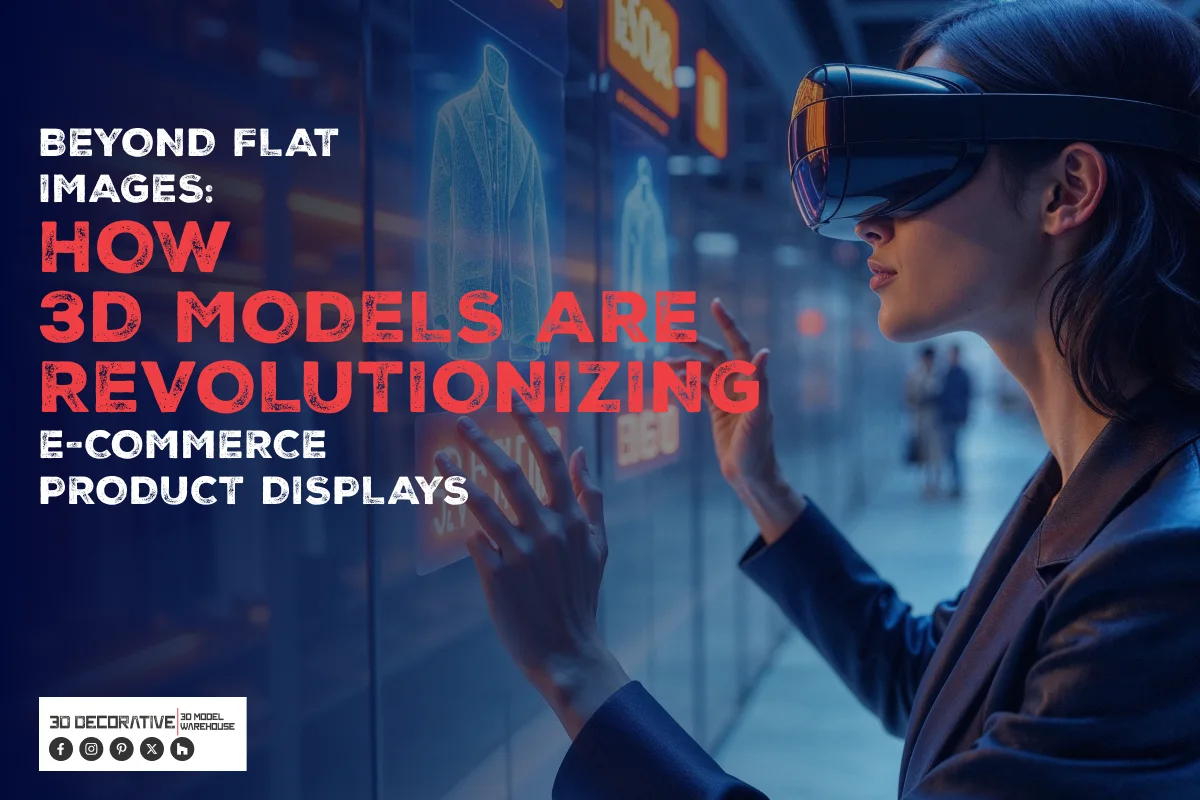Beyond Flat Images: How 3D Models are Revolutionizing E-commerce Product Displays
- Home
- Beyond Flat Images: How 3D Models are Revolutionizing E-commerce Product Displays
- Beyond Flat Images: How 3D Models are Revolutionizing E-commerce Product Displays

Tired of scrolling through endless, static product photos that leave you wondering, “What does this actually look like?” You’re not alone. The internet, while a treasure trove of shopping opportunities, has always struggled with conveying the tangible experience of physical retail. But that’s changing, and the catalyst is none other than the humble 3D model.
Forget the flat, two-dimensional world of traditional product imagery. We’re stepping into a new era where interactive, lifelike 3D models are transforming how we shop online. This isn’t just a flashy gimmick; it’s a fundamental shift that’s reshaping e-commerce, offering a more engaging, informative, and ultimately, satisfying shopping experience.
Why the Hype? The Power of Immersion
Imagine shopping for a new sofa. Instead of squinting at a few photos, you can rotate a 3D model, zoom in to examine the fabric texture, and even virtually place it in your living room using augmented reality (AR). This immersive experience allows you to:
- Gain a Deeper Understanding of Product Details: 3D models reveal intricate details that are often lost in flat images. You can see the stitching on a garment, the grain of wood on furniture, or the complex mechanics of a gadget.
- Visualize Products from Every Angle: No more guessing what the back of a product looks like. You can rotate and view it from any perspective, giving you a complete understanding of its form and design.
- Experience Products in Context: AR integration allows you to superimpose 3D models onto your real-world environment. This lets you see how a product will fit into your space and complement your existing decor.
- Reduce Uncertainty and Increase Confidence: By providing a more realistic and detailed representation of products, 3D models reduce the risk of buyer’s remorse and increase purchase confidence.
Beyond the Visuals: The Benefits for Businesses
The benefits of 3D models extend far beyond enhancing the customer experience. Businesses are also reaping significant rewards:
- Increased Conversion Rates: Studies have shown that products with 3D models and AR features see higher conversion rates compared to those with traditional imagery. Customers are more likely to buy when they have a clearer understanding of the product.
- Reduced Return Rates: By providing a more accurate representation of products, 3D models help to minimize discrepancies between customer expectations and reality, leading to fewer returns.
- Enhanced Brand Engagement: Interactive 3D models create a more engaging and memorable shopping experience, strengthening brand loyalty and fostering positive customer interactions.
- Streamlined Product Development and Marketing: 3D models can be used throughout the product lifecycle, from design and prototyping to marketing and sales. This streamlines workflows and reduces costs.
- Improved Search Engine Optimization (SEO): 3D models can be indexed by search engines, making products more discoverable online. Additionally, the rich media content increases time spent on page, a positive SEO signal.
The Technology Behind the Magic
Creating high-quality 3D models requires a combination of specialized software and hardware. Here’s a glimpse into the process:
- 3D Scanning: Physical products can be scanned using specialized scanners that capture their shape and texture.
- 3D Modeling Software: 3D artists use software like Blender, Maya, or 3ds Max to create digital models from scratch or refine scanned data.
- Texturing and Lighting: Textures and lighting effects are applied to 3D models to create a realistic appearance.
- Optimization for Web: 3D models are optimized for web use to ensure fast loading times and smooth performance.
- AR Integration: AR platforms like Apple’s ARKit and Google’s ARCore enable businesses to integrate 3D models into AR experiences.
The Future of E-commerce is 3D
The adoption of 3D models in e-commerce is still in its early stages, but its potential is undeniable. As technology continues to evolve, we can expect to see even more innovative applications of 3D models in online shopping.
- Personalized Shopping Experiences: 3D models can be used to create personalized shopping experiences, allowing customers to customize products and see how they will look before they buy.
- Virtual Showrooms: 3D models can be used to create virtual showrooms, allowing customers to explore entire product lines in a realistic and immersive environment.
- AI-Powered Product Recommendations: AI algorithms can analyze customer interactions with 3D models to provide personalized product recommendations.
- Metaverse shopping: 3D models are essential to creating products and shopping experiences in the metaverse.
In the near future, we may see the lines between physical and digital shopping blur even further, with 3D models playing a central role in bridging the gap. By providing a more engaging, informative, and personalized shopping experience, 3D models are poised to revolutionize e-commerce and reshape the way we shop online.
So, next time you shop, seek those 3D models—they’re the future. At 3D Decorative, we create that future, crafting 3D models with high-polygon precision and lifelike 3D textures. We focus on capturing every material nuance, from wood grain to metal sheen, ensuring an immersive experience. We empower informed decisions through exceptional 3D quality. Embrace the change.

